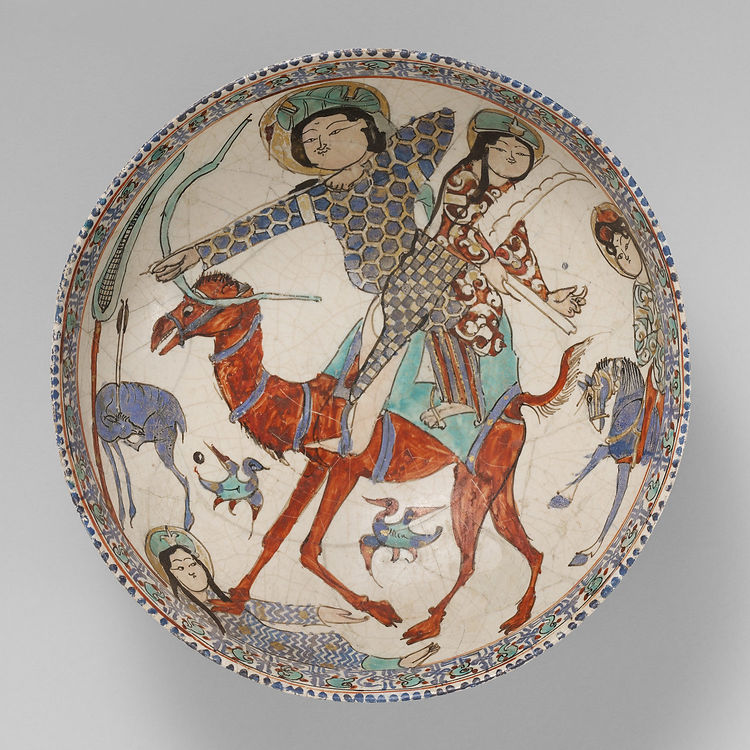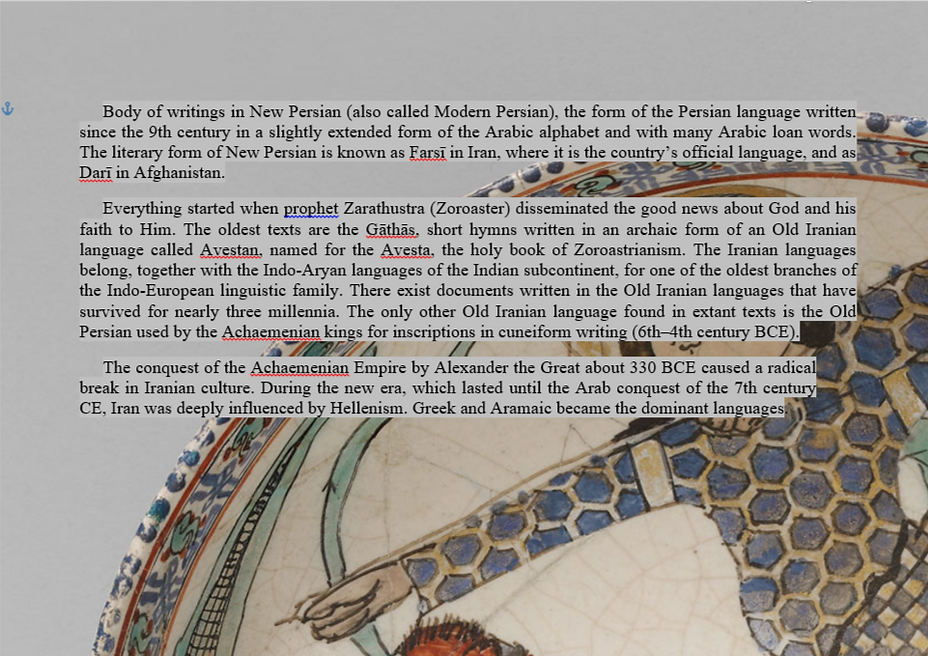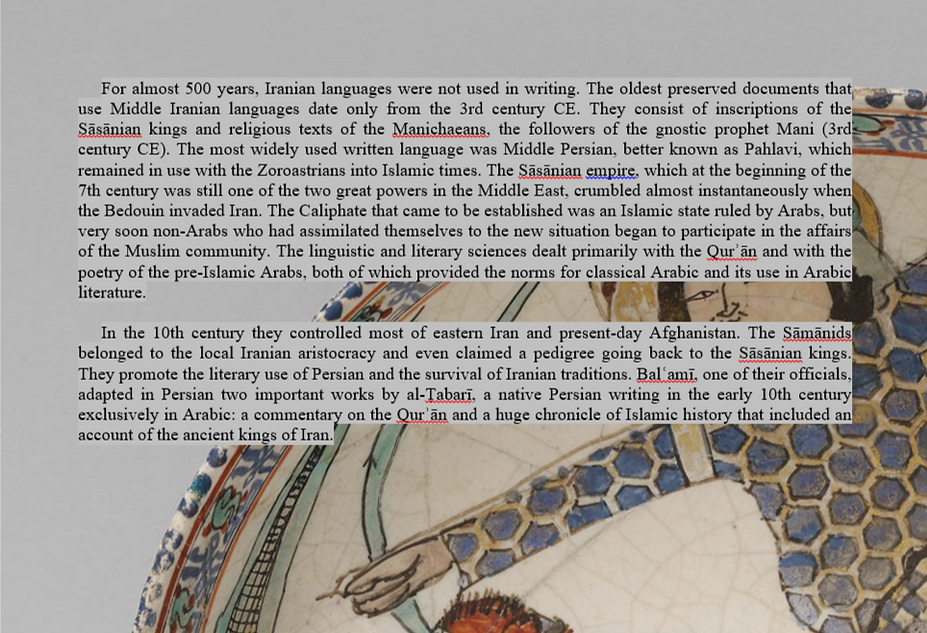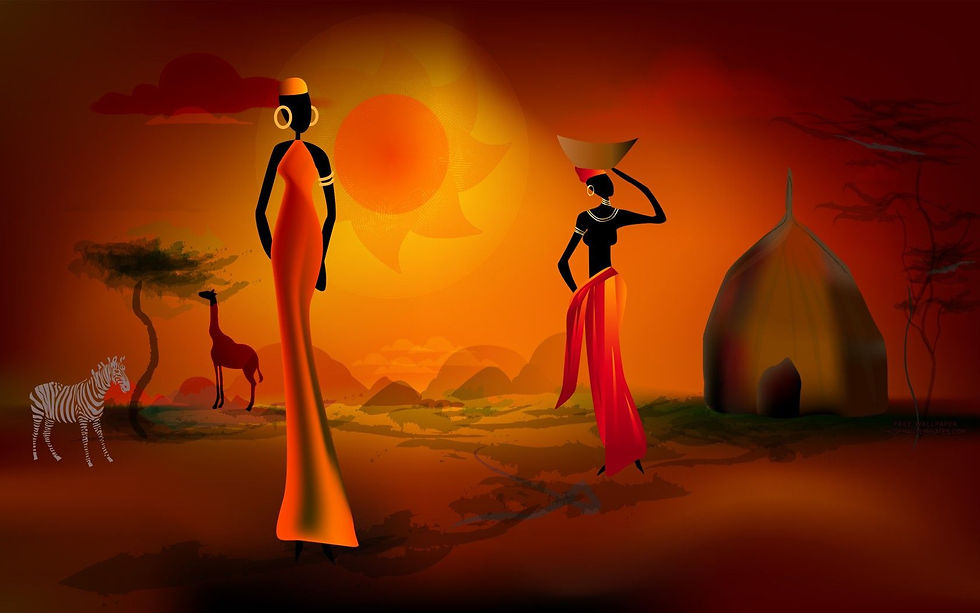

LESSON 1:
CHINESE LITERATURE
China is one of the countries with a very interesting history in literature. Their literary pieces highly reflect the way of life and traditions of the Chinese people.If you want to discover the beautiful history of Chinese Literature, just scroll down and enjoy reading.
Of course let us begin with the Background of Chinese Literature.
I'm a paragraph. Click here to add your own text and edit me. It's easy.


If you want to read a detailed input about the dynasties, click the attached file below.

A CHINESE LITERARY PIECE!


LESSON 2:
JAPANESE LITERATURE
Have you ever thought of traveling to Japan?
Well, before you go there, read this to get yourself acquainted with Japan’s beautiful culture and literature.

First, let’s talk about Japanese Writing System. Just like China and Korea, this country also have a unique writing system.
The modern Japanese writing system uses:
-
Kanji- ideographs from Chinese characters
-
Kana- a pair of syllabaries, consisting of
-
Hiragana- used for native Japanese words
-
Katakana- used for foreign loanwords and sometimes to replace kanji or hiragana for emphasis
-
Of course, one great way to study a country’s culture and traditions is through their literature. Here’s the Periods of Japanese Literature.









LESSON 3:
PERSIAN LITERATURE
If you're wondering why you cannot find Persia in the World Map, that's because Persia is now known as the country of Iran. The following paragraphs highlights the History of Persian Literature and how it evolved as time passed.






Here are some of the famous literary pieces of Persian Literature.







If you know more about Persian Literature, message me . I'll be happy to have a conversation with you :)

LESSON 4:
ARABIAN LITERATURE
Arabia is home to majority of the population of the Islam Community. As we know, Islam is the second largest religion in the world.
Let us discover together how the Islam faith influenced the literature of Arabia.






Some of Arabia's famous Literary Pieces




That's it, I hope you've learned something. I bet you're fascinated with Arabia's literary pieces.

LESSON 5:
SINGAPOREAN LITERATURE
After years of crafting literary pieces, Singaporean Literature is finally coming to the limelight. The following paragraphs will help you get more acquianted with Singapore's Literature.
The Background of Literature
The literature of Singapore comprises of literary works by Singaporeans in any of the country’s four main languages: English, Chinese, Malay, And Tamil. The literature of Singapore is viewed as a distinct body of literature portraying various aspects of Singapore society and forms a significant part of the culture of Singapore. A number of Singaporean writers such as Tan Swei Hian and Kuo Pao Kun have contributed in more than one language.
Singaporean Poetry
Singaporean literature in English started with the Strait-born Chinese community in the colonial era. Singaporean literature was published as early as the 1830s. The first notable Singaporean work of poetry in English is possibly F.M.S.R., a prastiche of T.S. Eliot by Francis P. Ng, published in 1935. This was followed by Wang Gungwu’s Pulse in 1950. With the independence of Singapore in 1965, a new wave of Singapore writing emerged, led by Edwin Thumboo, Arthur Yap, Robert Yeo, GohPoh Seng, Lee Tzu Peng and Chandran Nair. It is telling that many critical essays on Singapore literature named Thumboo’s generation, rightly or wrongly, as the first generation of Singapore writers. There were varying levels of activity in succeeding decades, with poets in the late 1980s and 1990s. In the late 1990s, English in Singapore found a new momentum with a whole new generation of poets born around or after 1965 now actively and publishing, not only in Singapore but also internationally. Local small presses such as Firstfruit and Ethos Books have been actively promoting the works of new wave of poets. The poetry of this younger generation is often politically aware, transnational and cosmopolitan, yet frequently presents their intensely focused, self-questioning and highly individualized perspective of Singaporean life, society, and culture.

Singaporean Fiction
Fiction writing in English did not start in earnest until after independence. Short stories flourished as a literary form, the novel arrived much later. Goh Poh Seng remains a pioneer in writing novels well before many of the later generation, with titles like If We Dream Too Long (1972) – widely recognizeed as the first true Singaporean novel – and A Dance of Moths (1995).Beginning as a short story writer, Penang-born Catherine Lim has been Singapore's most widely read author, thanks partly to her first two books of short stories, Little Ironies: Stories of Singapore (1978) and Or Else, The Lightning God and Other Stories (1980). These two books were incorporated as texts for the GCE 'O' Levels.
Lim's themes of Asian male chauvinistic gender-dominance mark her as a distant cousin to Asian-American writers such as Amy Tan. She has also been writing novels, such as The Bondmaid (1998) and Following the Wrong God Home (2001), and publishing them to an international audience since the late 1990s.
Han May is the pseudonym of Joan Hon who is better known for her non-fiction books. Her science-fiction romance Star Sapphire (1985) won a High Commendation Award from the Book Development Council of Singapore in 1986, the same year when she was also awarded a Commendation prize for her better-known book Relatively Speaking on her family and childhood memories. Rex Shelley hails from an earlier colonial generation, although he began publishing only in the early 1990s. A Eurasian, his first novel The Shrimp People (1991) examines the regional Eurasian community and their experience in Singapore. The book won a National Book Prize. His three other novels, People of the Pear Tree (1993), Island in the Centre (1995) and River of Roses (1998) all examine similar themes of the Eurasian community in the Southeast Asia region. He has won the S.E.A. Write Award in 2007.
Haresh Sharma is a playwright who has written more than fifty plays that have been staged all over the world, including Singapore, Melbourne, Glasgow, Birmingham, Cairo and London.[1] In May 2010, his highly acclaimed play Those Who Can't, Teach was published in book form by the independent publisher Epigram Books.

Singaporean Children Literature
Children's literature in Singapore has gained momentum in recent years due to increased interest in the genre generated by the First Time Writers and Illustrators Initiative which discovered acclaimed writers such as *Adeline Foo The Diary of Amos Lee, *Jin Pyn The Elephant and the Tree, and *Emily Lim Prince Bear and Pauper Bear.*Jessie Wee, one of the pioneers of children's literature, rereleased her popular Mooty Mouse series with Marshall Cavendish in 2009. According to the National Library Board, other prominent and prolific children's authors include Patricia Maria Tan, Chia Hearn Chek, Ho MinFong and Bessie Chua.
Singaporean Drama
Drama in English found expression in Goh Poh Seng, who was also a notable poet and novelist, in Robert Yeo, author of 6 plays, and in Kuo Pao Kun, who also wrote in Chinese, sometimes translating his works into English. The late Kuo was a vital force in the local theatre renaissance in the 1980s and 1990s. He was the artistic director of The Substation for many years. Some of his plays, like The Coffin is Too Big for the Hole (1984) and Lao Jiu (1990), have been now considered classics. Stella Kon gained international fame with her now-famous play Emily of Emerald Hill: a monologue. About an ageing Peranakan matriarch, it has been produced in Scotland, Malaysia and Australia. The sole character has been played by men as well as women.

Here's an example of a literary piece from Singapore!
“The Old Man, His Son, And Their Bike”
(by: M.Ibrahim)
There was once a poor old Malay,
One you have never seen the like,
Who sadly told his son one day,
“Son, we have to sell our bike.”
So to the nearest town they went,
The old man on the bike astride;
His son, very soon feeling spent,
Walked slowly on his side.
They passed two men on their way,
Two old buddies having a talk,
One was heard to distinctly say,
“He makes the young fellow walk,”
On hearing this old man said,
“I think, my son, they do not like
To see me riding, I’m afraid,
You had better ride the bike.”
Two more men later they met,
They both seemed at the boy to gawk,
Said one, “See that strong, selfish lad,
He makes the old man walk”
The old man then said with a frown,
“Whatever we do, my son, seems wrong,
So let both of us walk to town;
We can push the bike along.”
Two more men then came into view,
One of them, as he stepped aside;
Said, “Look, how foolish are those two,
Walking, when they both could ride.”
The old man winced at what he heard,
And irritably said, “Indeed!”
His anger had now been stirred;
“Let’s both ride our iron steed.”
The rusty bike wasn’t really fit,
Fir it hadn’t been well kept of late;
The bike broke, the tires went flat;
They were both thrown to the ground!
Alas, alack, what noise was that?
They both heard a snapping sound,
The bike broke, the tires went flat,
They were both thrown to the ground!
Now, folk, you all know the moral
Of this quite short and simple tale;
That if you try to please others,
To please yourself, you will fail

LESSON 6:
KOREAN LITERATURE
The literature of Korea became a great part in the lives of people across the world especially among Filipinos. The wide scope of genre and the interesting story line of the literary pieces have made Korea very famous in the field of literature. Together, let us learn more with the beautiful literature of Korea.
The Background of Literature
Korean literature, the body of works written by Koreans, at first in Classical Chinese, later in various transcription systems using Chinese characters, and finally in Hangul (Korean: han’gŭl; Hankul in the Yale romanization), the national alphabet.
Although Korea has had its own language for several thousand years, it has had a writing system only since the mid-15th century, when Hangul was invented. As a result, early literary activity was in Chinese characters. Korean scholars were writing poetry in the traditional manner of Classical Chinese at least by the 4th century CE. A national academy was established shortly after the founding of the Unified Silla dynasty (668–935), and, from the time of the institution of civil service examinations in the mid-10th century until their abolition in 1894, every educated Korean read the Confucian Classics and Chinese histories and literature. The Korean upper classes were therefore bilingual in a special sense: they spoke Korean but wrote in Chinese

By the 7th century a system, called idu, had been devised that allowed Koreans to make rough transliterations of Chinese texts. Eventually, certain Chinese characters were used for their phonetic value to represent Korean particles of speech and inflectional endings. A more extended system of transcription, called hyangch’al, followed shortly thereafter, in which entire sentences in Korean could be written in Chinese. In another system, kugyŏl, abridged versions of Chinese characters were used to denote grammatical elements and were inserted into texts during transcription. Extant literary works indicate, however, that before the 20th century much of Korean literature was written in Chinese rather than in Korean, even after the invention of Hangul.
In general, then, literature written in Korea falls into three categories: works written in the early transcription systems, those written in Hangul, and those written in Chinese.
Korean Poetry
There are four major traditional poetic forms: hyangga (“native songs”); pyŏlgok (“special songs”), or changga (“long poems”); sijo (“current melodies”); and kasa (“verses”).

SIJO
A Korean verse form related to haiku and tanka and comprised of three lines of 14-16 syllables each, for a total of 44-46 syllables. Each line contains a pause near the middle, similar to a caesura, though the break need not be metrical. The first half of the line contains six to nine syllables; the second half should contain no fewer than five. Originally intended as songs, sijo can treat romantic, metaphysical, or spiritual themes. Whatever the subject, the first line introduces an idea or story, the second supplies a “turn,” and the third provides closure. Modern sijo are sometimes printed in six lines.
Here's one interesting story from Korea. I hope you will like it!
The Vanity Of The Rat
Rena is the daughter of Mr. and Mrs. Rat. The only thing that they want for Rena is to marry the best man. They talk to Mr. Sun first to marry their daughter, but Mr. Sun reffered the more powerful person than him, who is Mr. Cloud. Mr. Rat offers her daughter’s hand to Mr. Cloud but Mr. Cloud rejected it. He reffered Mr. Wind, for he is truly more powerful than Mr. Cloud.
But Mr. Wind also rejected the offer of Mr. Rat. Mr. Wind recommended Mr. Wall which is more powerful than him. But Mr. Wall also rejects the offer. He referred Roger Rat, who is the son of Old Ronald Rat. Roger Rat loves Rena so much. Mr. Rat finally agreed, and Roger Rat accepted the offer given by Mr. and Mrs. Rat and arrange their marriage immediately.

LESSON 7:
INDIAN LITERATURE
India is home to the very famous Taj Mahal, Bollywood and of course the world's most famous curry. There culture is very rich when it comes to history and their very interesting way of life. Question is, "Is their literature as interesting as the famous Taj Mahal?". Together, let's figure it out.
Background of Indian Literature
Indian literature is generally believed to be the oldest in the world. With the vast culture diversities, there are 22 officially recognized languages in India.Over thousands of years, huge literature has been produces in various languages in India.It is to be noted that a large part of Indian literature revolves around devotion, drama, poetry and songs. Sanskrit language dominated the early Indian scene.It is also interesting to note that the Hindu Literary traditions have dominated a large part of Indian culture. These traditions are reflected in great works like Vedas and epics such as Ramayana and Mahabrata. Treatises like Vaastu Shastra (architecture), Arthashastra (political science) and Kamsutra are true reflection of the Indian literary excellence. About 2000 B.C., a branch or the Aryan race gave Vedic Literature, Sanskrit epics, the Hindu religion and Caste system.

Their civilization, however, appears to be very ancient; religion, philosophy, ethics, and literature all seem to have reached a high level of development before authentic records were kept. The modern period of Indian literature began in the 18th century with the colonization of India by the British. There was not a complete break in the past, however. The influence of the early Sanskrit classics could still be seen in the modern novels, poetry, and drama that were being reshaped by the Western political ideas and literary styles.The modern literature of all Indian languages was inevitably influenced by the desire for social reform, antipathy toward the British rule, the political activities of Mahatma Gandhi, and new ideologies coming from Europe- particularly SOCIALISM and MARXISM. Much of the literature tried to revive the great periods of Indian history, such as the Maurya, Gutpa and Mughal dynasties before British intervened.
Here are some of the most famous works in India.
KARMA
By: Khushwant Singh
"Karma" is a story written by Indian writer Khushwant Singh. It was originally published in 1989 in Singh's The Collected Stories. Karma is about an Indian "Gentleman" who tries to adopt upper class English culture and lifestyle such as speaking the "Queen's English", and about his relation with his wife etc.
THEME
The story Karma illustrates the famous proverb "Pride Comes Before a Fall". It is the story of an arrogant person who feels bad about his country's culture, lifestyle etc. He is condescending to his wife because she is an ordinary woman unable to appreciate his aristocratic English culture. Others are: Imitation of foreign culture Unhappy married life Contrast of culture and life-style Aristocracy and patriotism

PLOT
Mohan Lal is a middle-aged man who works in the British Raj. He is ashamed to be an Indian and hence he tries to speak in English or in Anglicized Hindustani and dresses up as a high-ranked British official. He fills crossword puzzles, to show off his immense knowledge of English. His wife Lachmi is a traditional Indian woman and due to this difference they don't have a sweet married life.
The important event occurs on a journey of Mohan Lal and Lachmi in a train. He makes Lachmi sit in the general compartment while he gets his seat arranged in the first class compartment, which was meant for the British. There he meets two British soldiers who try to abuse him. When the arrogant Mohan Lal opposes them, he is thrown out of the train. He could only look through the rails on the moving train.
Tone and style of narration
Karma presents a relevant topic in the typical humorous way of Khushwant Singh. The style of narration used by the author is third person omniscient limited to Sir Mohan Lal at first, then his wife Lachmi, then Sir Mohan, then Lachmi, which gives the reader a better perspective.

The Lion Makers
A story from Panchatantra
The Panchatantra is a collection of ancient stories from India that were written down more than two thousand years ago, though the stories themselves are much older than that. They are the first fables ever told in the world. They’re mostly humorous stories that have a very pointed point.
Four Brahmans lived near one another and were friends in a small town. Three of them had been scholars their whole lives and had learned much, but they had no common sense. The fourth couldn’t be bothered to study from dusty dry books, but he had a great deal of common sense.
One day they got together to talk and decided that all their accomplishments and learning were pointless if they didn’t go out in the world to meet people, see places, gain a little political power, and make a little money. So they decided to travel together.
They hadn’t gone far when the eldest said, “One of us is not smart enough or educated enough, having nothing but common sense. He won’t make it very far in the world without scholarship, so let’s not share our money with him. He should go back home.”
The second said, “That’s true, friend, you should go home.” But the third said, “No, this is no way to treat our friend who we have known since we were small children playing together. He will stay with us and have a share of the money we earn.”
So they agreed and all four continued on together. Soon they came upon the bones of a dead lion in the forest. One of them said, “Here is a chance to show off how intelligent and learned we are. Let’s bring him back to life through our superior knowledge.”
The first said, “I can assemble the skeleton for I know how it should go.” The second said, “I can add on the muscles, organs, and skin.” The third said, “I can give it life.”
But the fourth, who was the man of no scholarship said, “This is a lion. If you give it life it will kill every one of us.”
The scholars replied, “We will not make all our learning pointless. We must use it at every opportunity.” So the fourth replied again, “Then wait a moment while I climb this tree.”
So the man of sense climbed a tree while the other three brought the lion to life. The lion rose up and killed the three scholars. But the man of sense climbed down after the lion had left and went home.

LESSON 8:
AFRICAN LITERATURE
Africa is one of the continents with a very interesting culture and way of life. They speak many languages and have practices unique to other continents. In the following paragraphs, we will discover how African way of life and languages influenced their literature.
African literature are literary works of the African continent. It consists of a body of work in different languages and various genres, ranging from oral literature to literature written in colonial languages (French, Portuguese, and English).
Oral literature, including stories, dramas, riddles, histories, myths, songs, proverbs, and other expressions, is frequently employed to educate and entertain children. Oral histories, myths, and proverbs additionally serve to remind whole communities of their ancestors' heroic deeds, their past, and the precedents for their customs and traditions. Essential to oral literature is a concern for presentation and oratory. Folktale tellers use call-response techniques. A griot (praise singer) will accompany a narrative with music.
Some of the first African writings gained attention in the West were the poignant slave narratives, such as The Interesting Narrative of the Life and Adventures of Olaudah Equiano or Gustavus Vassa, the African (1789), which described vividly the horrors of slavery and the slave trade.
Since the early 19th cent. writers from western Africa have used newspapers to air their views. Several founded newspapers that served as vehicles for expressing nascent nationalist feelings. French-speaking Africans in France, led by Léopold Senghor , were active in the négritude movement from the 1930s, along with Léon Damas and Aimé Césaire , French speakers from French Guiana and Martinique.

After World War II, as Africans began demanding their independence, more African writers were published. Such writers as, in western Africa, Wole Soyinka , Chinua Achebe , Ousmane Sembene , Kofi Awooner, Agostinho Neto , Tchicaya u tam'si, Camera Laye, Mongo Beti, Ben Okri, and Ferdinand Oyono and, in eastern Africa, Ngugi wa Thiong'o , Okot p'Bitek , and Jacques Rabémananjara produced poetry, short stories, novels, essays, and plays.
In South Africa, the horrors of apartheid have, until the present, dominated the literature.
The weaving of music into the Kenyan's play points out another characteristic of African literature. Many writers incorporate other arts into their work and often weave oral conventions into their writing.
African literature has origins dating back thousands of years to Ancient Egypt and hieroglyphs, or writing which uses pictures to represent words. These Ancient Egyptian beginnings led to Arabic poetry, which spread during the Arab conquest of Egypt in the seventh century C.E. and through Western Africa in the ninth century C.E. These African and Arabic cultures continued to blend with the European culture and literature to form a unique literary form.
Africa experienced several hardships in its long history which left an impact on the themes of its literature. One hardship which led to many others is that of colonization.
Colonization led to slavery. Millions of African people were enslaved and brought to Western countries around the world from the sixteenth to nineteenth centuries. This spreading of African people, largely against their will, is called the African Diaspora
Sub-Saharan Africa developed a written literature during the nineteenth and early twentieth centuries. This development came as a result of missionaries coming to the area. The missionaries came to Africa to build churches and language schools in order to translate religious texts. This led to Africans writing in both European and indigenous languages.